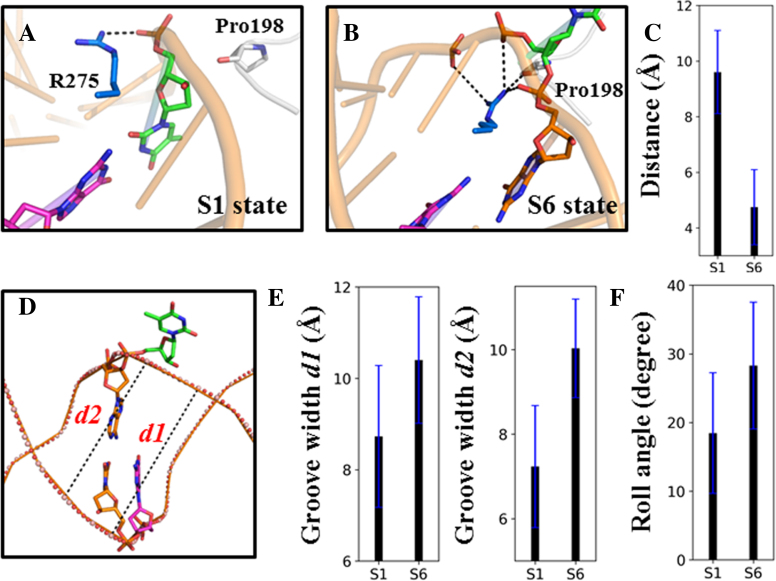Figure 4.
Penetration of the intercalated residue Arg275 into the DNA helix widens the groove width and bends the DNA backbone. In S1 (A), Arg275 is lying along the minor groove and forms electrostatic interactions with the backbone P–O− group of the mispaired dT nt. In S6 (B), however, Arg275 is tightly locked by the pinched DNA backbone by interacting with the backbone P–O− groups of three DNA nts and Pro198 backbone C=O group. (C) The distance between the Arg275 CZ atom and Pro198 O atom was measured for the S1 and S6 states. For each measurement, the mean value (in black) was averaged over all the microstates that belong to the same macrostate, and the corresponding standard error (in blue) was calculated. (D) To measure the minor groove width, two bps were selected: the mispaired T·G and one of its adjacent bp (denoted as d1 and d2, respectively). (E) The calculated d1 and d2 for the S1 and S6 states. (F) To measure the bending of the DNA backbone exerted by TDG, the roll angle between the two bps adjacent to the mispaired T·G bp was calculated for S1 and S6. The mean and corresponding errors are obtained in the same way as that in Figure 4C.

